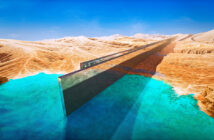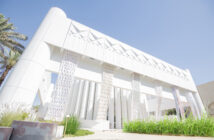Cultural heritage includes tangible culture such as buildings, monuments, landscapes, works of art, and artifacts. We asked the staff of the embassies of various countries in Riyadh to name the most known landmark, building, tower or monument in their respective countries and what makes them special and unique. These treasures are part of their heritage, showing glimpses of their nation’s past and how their present came to be.

ANKE SALMGREN VON SCHANTZ
Head of the Visa Section and responsible for Public Affairs at the Embassy of the Federal Republic of Germany
BRANDENBURGER TOR
The Brandenburger Tor is probably the most famous German landmark. As the only surviving city gate of Berlin, it is a strong symbol for both the division and the reunification of Germany’s East and West. The Brandenburger Tor was built between 1789 and 1793. Friedrich Wilhelm II, the Prussian king, had asked his architect Carl Gotthard Langhans to create an arch that would crown the boulevard ‘Unter den Linden.’
The Brandenburger Tor has played different roles throughout German history. The Nazis used the gate as a symbol of force and domination. When the Berlin Wall was constructed in 1961, the gate ended up right next to the wall and was out of reach for everyone except for the East German soldiers for nearly 30 years. The Brandenburger Tor then became the natural scene for the official reunification of Germany after the fall of the Berlin Wall.
I was born in 1989 in Brandenburg, in the German Democratic Republic (East Germany). Until then, my parents only knew the world from an East German perspective. With their second child came a new reality. The Cold War was over, Germany was reunited and they were free – free to speak their mind, free to travel, and free to cross the Brandenburger Tor.
Without the German reunification, my life and the lives of so many other ‘Ossis’ and ‘Wessis’ would have been very different. Thus, I am very thankful for this event in German history and I am happy that the Brandenburger Tor is there to remind me of it.
MUSEUMSINSEL (ISLAND OF MUSEUMS)
The Museumsinsel is located in the historical center of Berlin in the middle of the river Spree, not far from the Federal Foreign Office. The Island of Museums is an ensemble of five museums surrounded by water, a small park, and the Berlin Cathedrale, and was declared a UNESCO World Heritage site in 1999.
Like the Brandenburger Tor, the Museumsinsel was a visionary project constructed under the order of Prussian kings, starting with Friedrich Wilhelm IV. The five museums were built between 1824 and 1930 by the most renowned Prussian architects. The first museum to be opened to the public was the Old Museum in 1830. It was later followed by the New Museum, the Old National Gallery, the Bode-Museum and finally, in 1930, the Pergamonmuseum.
The Pergamonmuseum is the most popular museum in Berlin, attracting the highest number of visitors. It displays the collection of Classical Antiquities, the Museum of the Ancient Near East, and the Museum of Islamic Art. The most famous work is the Roman Pergamon Altar which depicts the battle between gods and giants. However, due to construction works, it will not be on display until 2025.
My personal favorite is the New Museum, which houses the Egyptian Museum and, among other treasures, the world-famous bust of Nefertiti. What I admire most is the building itself, combining original parts and traces of war with ultra-modern conversions.
I love the ambience surrounding the Museumsinsel. When the sun is out, there are plenty of people loitering by the river bank while sipping a drink, eating a classical Döner Kebab or listening to street musicians as they breathe in the history of this unique place.

VLADIMIR DOROVSKI
Deputy Head of Mission, Second Secretary and Chief of Consular Section at the Embassy of the Republic of Bulgaria
SERDICA
Famous for being at the crossroads between Europe and Asia for centuries, Bulgaria is full of historical places, ancient ruins, artifacts, and Thracian treasures. Sofia, the capital city founded 7,000 years ago, is one of the oldest cities in Europe.
Lying at the heart of its bustling downtown is the Roman complex of Serdica (the former name for Sofia), which nowadays is a large open-air museum. Visitors can walk around the foundations of the preserved, 2000-year-old Roman road and amphitheater, right below the main institutions of the country – the Council of Ministers and the Presidency.
Located above the ancient complex is the so-called ‘Triangle (or Square) of Tolerance.’ Three places of worship – St. Nedelya Church, Banya Bashi Mosque and Sofia Synagogue, placed in a triangle-like square with two minutes’ walking distance between them – serve worshipers peacefully and simultaneously, in a way that is unique to the whole of Europe.

SS. CYRIL AND METHODIUS NATIONAL LIBRARY
St. Cyril and St. Methodius is the national library of Bulgaria, founded in 1878, and is the largest in the country. It is named after the brothers Cyril and Methodius, who were the creators of the Glagolitic alphabet. Later on, in 893, the Bulgarian/Cyrillic alphabet was established by the brothers’ disciples and was proclaimed at the Old Capital Pliska to be the official alphabet of Bulgaria. The new script was accommodated as a foundation for many alphabets and languages, mainly those with Slavic origin, including those used by Muslim Slavs. It is currently used – either exclusively or as one of several alphabets – in more than 50 languages.
With the accession of the country to the European Union in 2007, Cyrillic became the third official script of the EU. Every year, on May 24th, Bulgaria celebrates the National Day of Bulgarian Alphabet, Enlightenment and Culture, and Slavic Literacy, with many events taking place around the library.
We take great pride in our language and cultural achievements, and cherish May 24th as a major occasion for recitals, school parades, and various cultural happenings.

ARNALDO C. MAHOR
Assistance-to-Nationals Officer and Attaché at the Embassy of the Republic of the Philippines
BASCO LIGHTHOUSE
Standing at 66 feet tall on Naidi Hill in the town of Basco, Batanes, this lighthouse was constructed in March 2003 to serve as a navigating facility for local fishermen and as a tourist attraction in the province. Its marker tells the story of an Ivatan chieftain who lived on Naidi Hill, which is considered a strategic location for town chiefs as it overlooks the town of Basco to the east and Basco Bay to the west. According to the story, the Ivatan chieftain received a message from the King of Spain offering protection in exchange for his conversion to Christianity. He accepted, and was baptized as Don Carlos Abad.
Basco Lighthouse has become famous for the traditional Ivatan dwelling, recognizable for its rubble masonry, attached to its base — a testament to how intertwined the lighthouse is to the history of the hill it stands on and the people who have lived there for many generations.
We visited Basco, Batanes in 2019 and it was a great experience – like being in an earlier era in Philippine history. The number of tourists were limited daily and controlled by the Tourism Agency to protect and preserve the place.

SAN AGUSTIN CHURCH
San Agustin Church, the oldest Baroque church in the Philippines, is also known as the Archdiocesan Shrine of Nuestra Senora de la Consolacion y Correa, or the Immaculate Conception Parish. It is a Roman Catholic church under the auspices of the order of St. Augustine, located inside the historic walled city of Intramuros in Manila, inhabited by Spanish colonists. It is a church that has survived earthquakes, typhoons, and wars. It has a 400-year history and was listed as a UNESCO World Heritage site in 1993 as St. Augustine.
It exhibits remarkable features such as retablos (altars) of high Baroque style and wall buttresses separating crypto-collateral chapels. What makes it unique are its ceiling paintings in the tromp l’oeil style. The centuries-old church bore witness to 400 years of Spanish rule in the Philippines.
It is very memorable for me because in 1983, I got married in this church. Since then, it has not been restored and has an adjacent museum which is a must-see when you visit Intramuros in Manila.
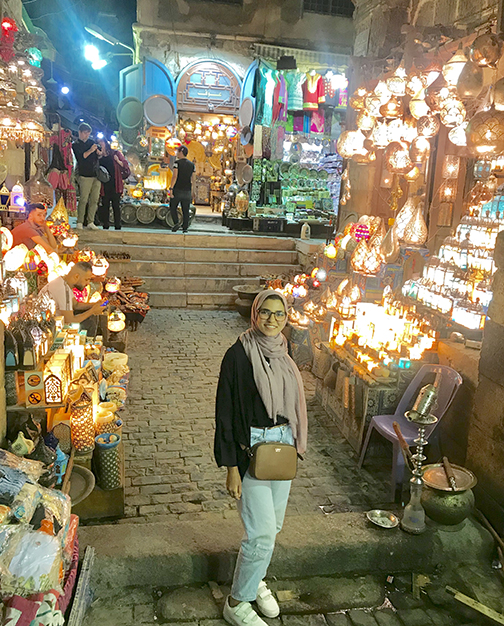
MANAL SHOAIB
Personal Assistant to HE, the Ambassador of the Royal Danish Embassy
Home Country: Egypt
LUXOR
Luxor is a world-famous city located in Upper Egypt, known to be the home of intact ancient Egyptian temples that date back almost 4,000 years. Luxor alone has one third of the world’s ancient monuments such as the Karnak Temple, Luxor Temple, Valley of the Kings, Valley of the Queens, the Temple of Deir al-Bahri, and of course the beautifully constructed Temple of Hatshepsut.
I visited Luxor in 2010 with my sister and a group of college mates for the first time in my life. I was fascinated by all the ancient glamor and beauty of this city. One of the places that enchanted me was the Valley of the Kings, especially the Tutankhamun tomb. Once you enter the tomb, you will be amazed by the colors and drawings around you. In addition to the Valley of the Kings, another spot that caught my attention was the Temple of Hatshepsut, which was built by Queen Hatshepsut and symbolizes the importance of the role of women in ancient Egypt.
I returned to my hometown with the best memories and experiences of the kindness and generosity of the people of Luxor.
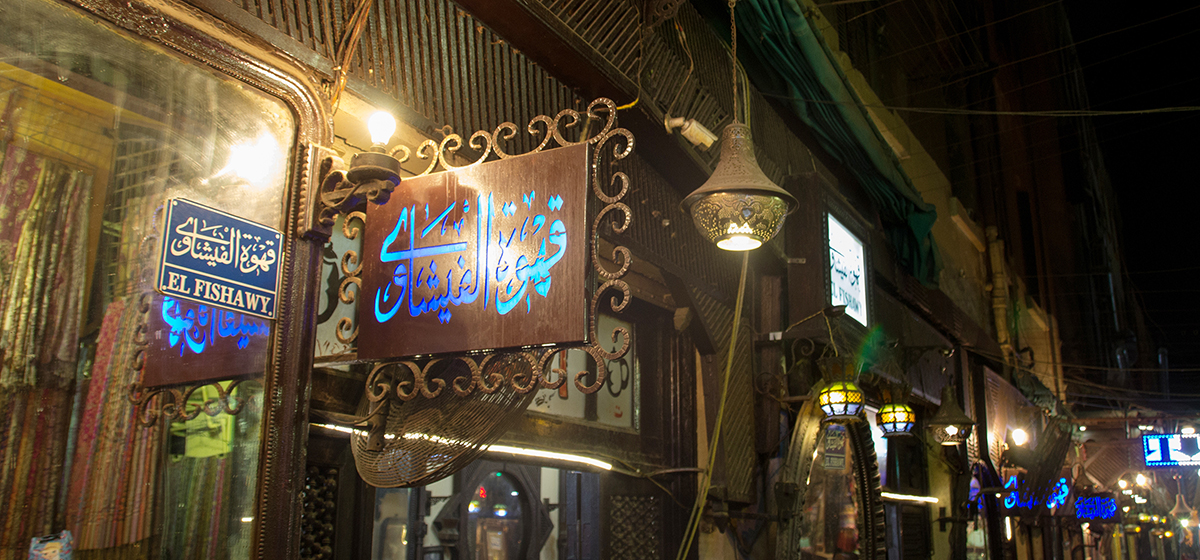
KHAN ELKHALILI
Old Cairo, the melting pot of the three divine religions – Islam, Christianity and Judaism – is one of the most serene and mesmerizing places to visit in the city. In the heart of it lies Khan Elkhalili, an area which has been an important destination for cultural and economic activities for more than 700 years.
The area has a special charm to it, particularly when you walk down the alleys with the sound of Umm Kulthum resonating from the different shops and cafes around you, in addition to the spiritual aura from the old mosques and shrines. It’s a feeling that is hard to replicate in any other place.
The spot has always represented itself as a home to many of the renowned poets and novelists who found their serenity and inspiration in the alleyways of this district. There’s El-Fishawi Cafe, one of the oldest in Cairo (established in 1797), which was one of the Nobel Prize winner Naguib Mahfouz’s favorite cafés.
For architecture enthusiasts, Al Muizz Street, Al-Hussein Mosque and Wekalet El Ghouri pose fascinating examples of medieval Islamic architecture. I felt like I was taking a trip back in time to ancient Cairo.
While strolling through the market, I was dazzled by the various bazaars and antique shops selling all kinds of gifts and souvenirs. Jewelry, gold, and antiquities are among the many items you can find there. The skill and craftsmanship depicted in all the pieces there made it almost impossible for me to resist buying a lot of souvenirs for myself and my friends, items that I hold dear to this day. As soon as the flights are back to normal, I invite everyone to visit this place.

NIDALI FAKHOURY
Personal Assistant to the Deputy Head of Mission at the Embassy of the Kingdom of Belgium
Home Country: Lebanon
TEMPLE OF BAALBEK
The Baalbek Temple complex includes two of the largest and grandest Roman temple ruins: the Temple of Bacchus and the Temple of Jupiter. The temple complex is considered an outstanding archaeological and artistic site of Imperial Roman Architecture, and was listed as a UNESCO World Heritage site in 1984. During the Roman Empire, the city of Baalbek was called Heliopolis, meaning ‘Sun City.’
I still remember how I was mesmerized and amazed by the grandeur of the temples the first time I went to Baalbek as a little girl with my family. A few years ago, I went back with my husband and the feeling was the same! When in Lebanon, you definitely have to visit it.
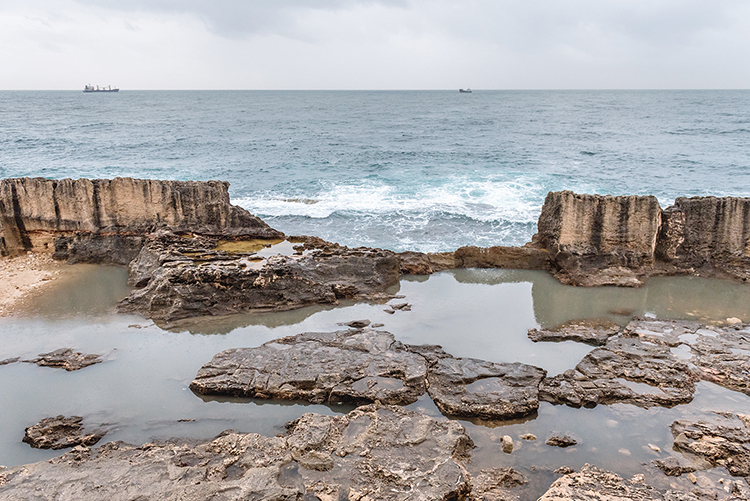
PHOENICIAN WALL IN BATROUN
The ancient Phoenician sea wall was originally a natural structure composed of petrified sand dunes. It was reinforced gradually by the Phoenicians with rocks, and the wall as it stands today took its present shape in the first century BC. The Phoenicians used this wall as protection against sea storms and invaders, while during Roman times it again functioned as a quarry. The wall is 225 meters long and 1-1.5 meters thick.
As a sea lover, this place has a special place in my heart. I remember walking the old streets of the beautiful city of Batroun to reach it. My friends and I used to climb the wall to sit and watch one of the most beautiful sunsets from up there.

ROBERT PARK
Advisor at the Embassy of the United States of America
MOUNT RUSHMORE NATIONAL MEMORIAL
I love America’s National Park system. I visit national parks whenever I am near any. Mount Rushmore is a well-known national memorial located near Rapid City, South Dakota, United States. I appreciate the time, energy, and effort that went into creating Mount Rushmore. The majestic figures of George Washington, Thomas Jefferson, Theodore Roosevelt, and Abraham Lincoln are great reminders of the country’s birth, growth, development, and preservation. The 60-foot granite faces carved in the mountain are man-made wonders and they symbolize the ideals of freedom, democracy, and the American dream.
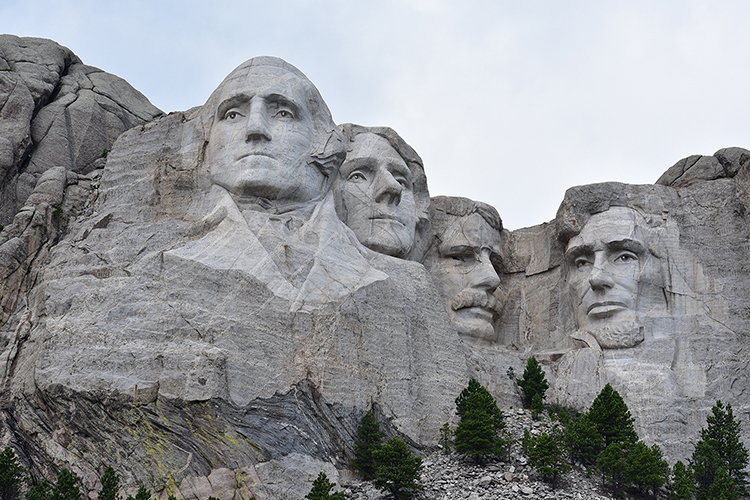
CRAZY HORSE MEMORIAL
Lesser known and very near to Mount Rushmore is the Crazy Horse Memorial, an independent organization. The size of the sculpture, its location, and the dedication of those committed to the ongoing endeavor left me awestruck. Their website captures some of the reasons for my awe: “The Mission of Crazy Horse Memorial Foundation is to protect and preserve the culture, tradition and living heritage of the North American Indians. The Foundation demonstrates its commitment to this endeavor by following these objectives: continuing the progress on the world’s largest sculptural undertaking by carving a Memorial of Lakota leader Crazy Horse; providing educational and cultural programming to encourage harmony and reconciliation among all people and nations; acting as a repository for Native American artifacts, arts and crafts through the Indian Museum of North America and the Native American Educational and Cultural Center, and establishing and operating the Indian University of North America, and when practical, a medical training center for American Indians.”



